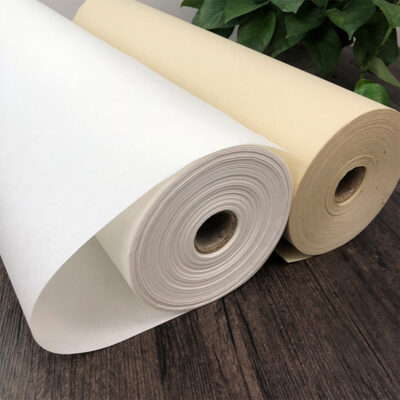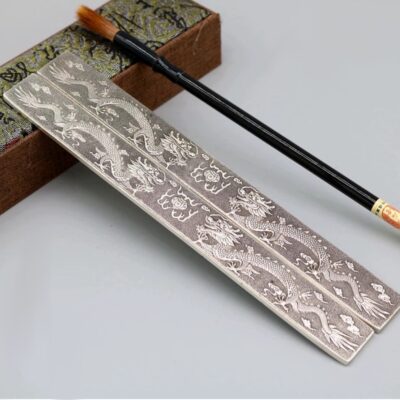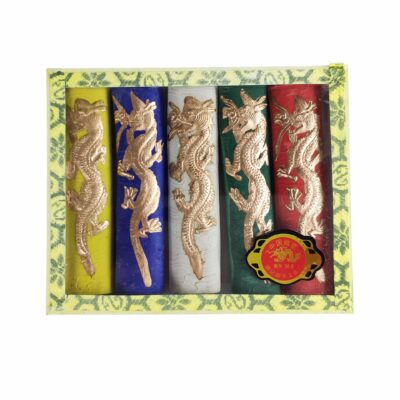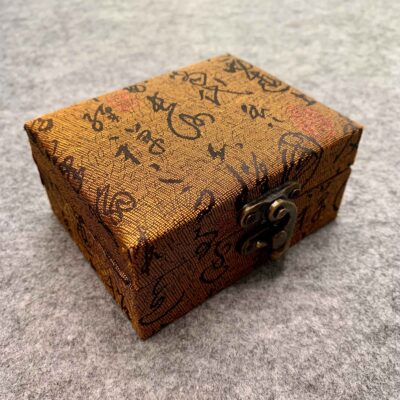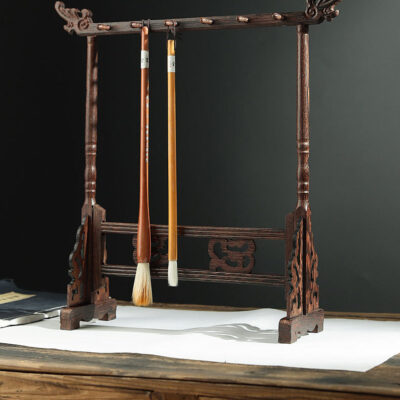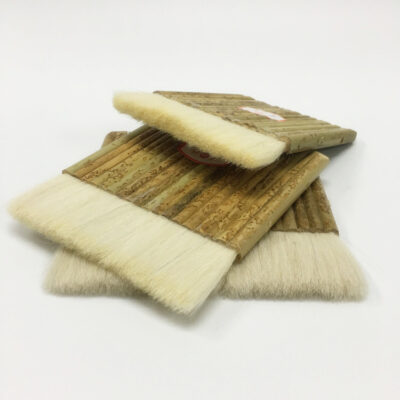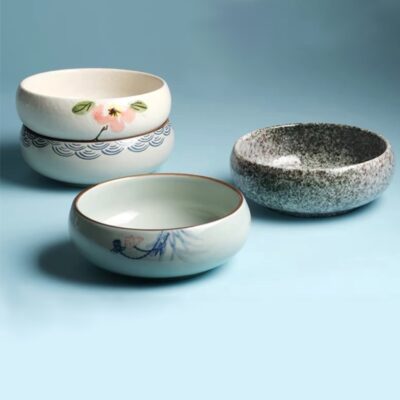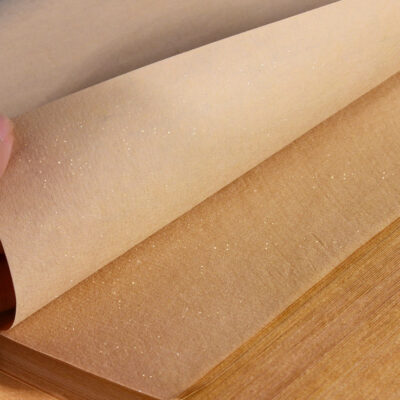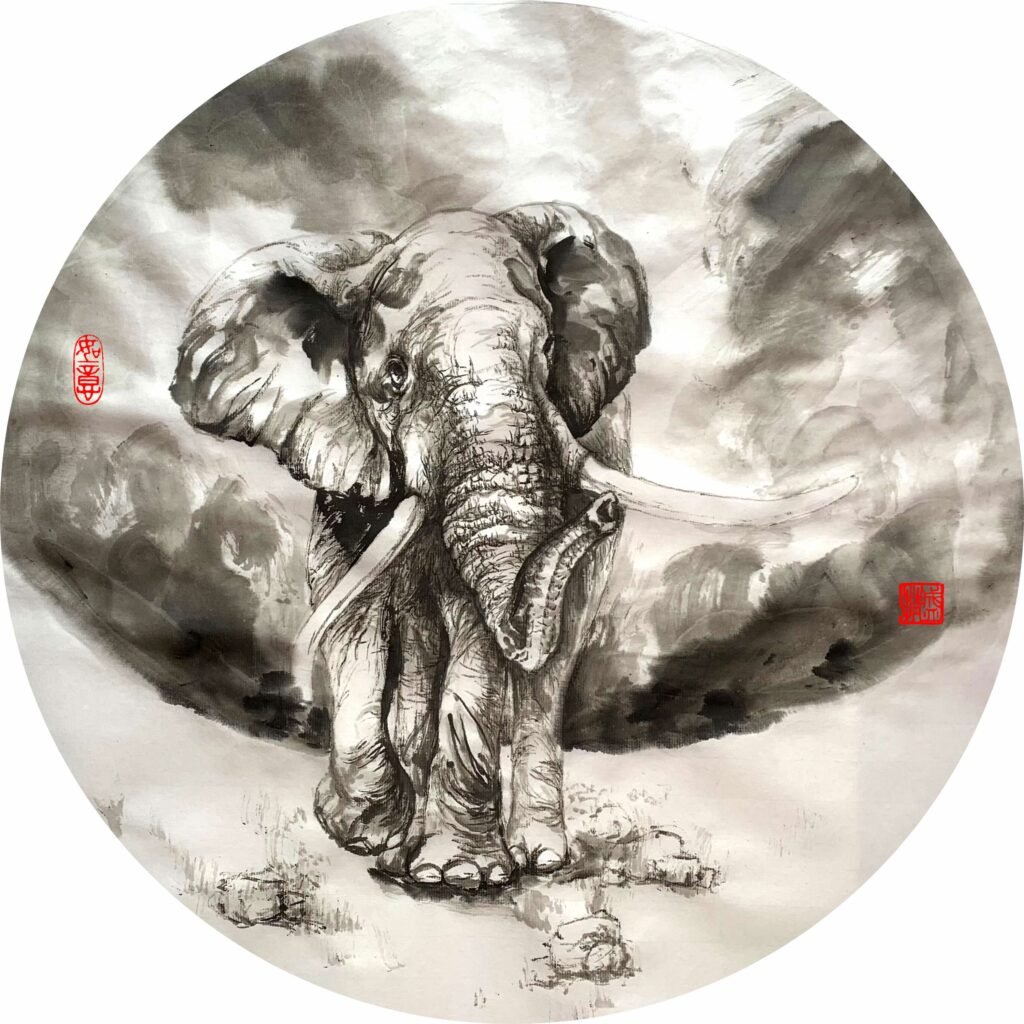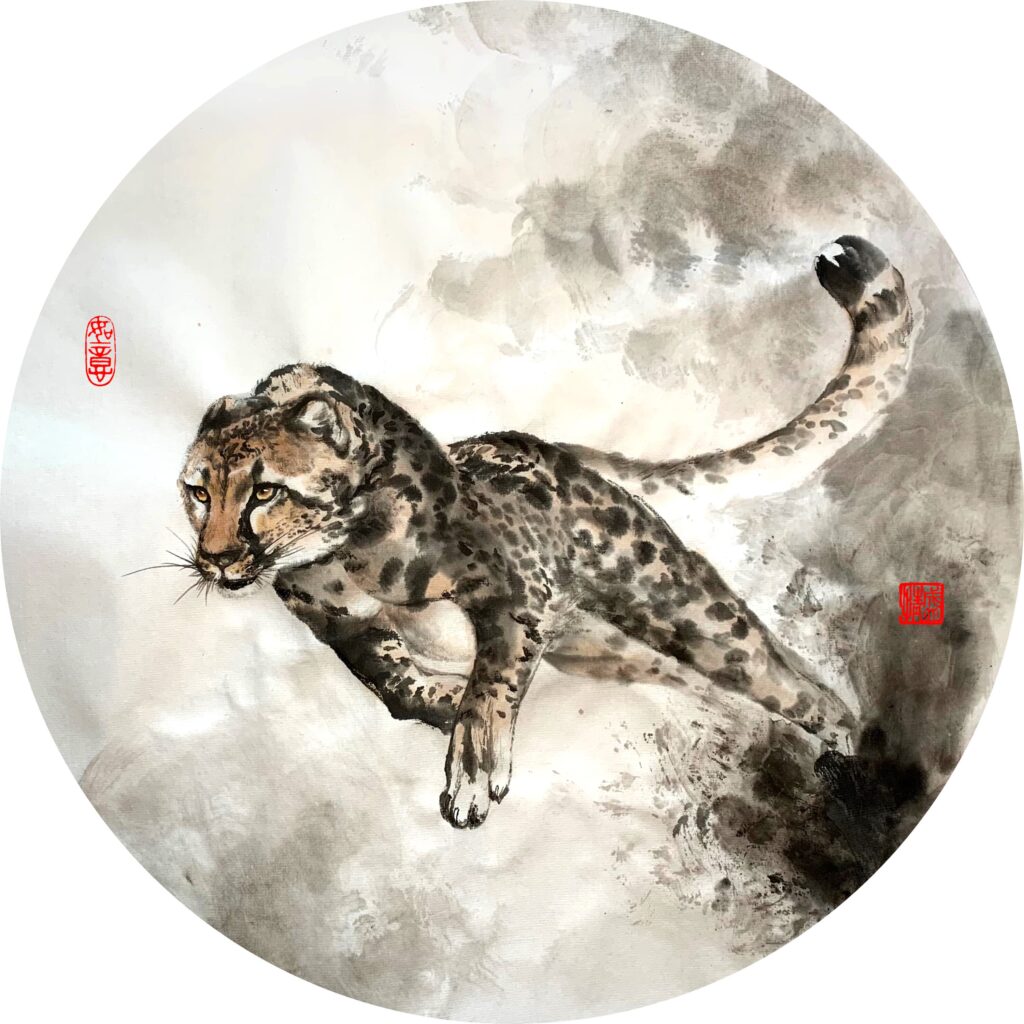Besides the brush and ink, Xuan rice paper and ink stone are both essential components of the Four Treasures of the Scholar’s Chamber. Continuing from our discussion last time, let us focus on the other two treasures.

Xuan Rice Paper

The Xuan rice paper gained its name from the region of its original birth place, and the making of it is a very beautiful yet complicated process. If you are interested, here is our blog about it. These papers have a name “longevity paper”, highlighting the property of a well made paper, however, as delicate papers, their maintenance should also be a point of concern, so that your productions will have guaranteed success.
- Because the paper making relies on tree barks and other natural ingredients, the number one concern in its maintenance is to avoid humidity. These ingredients have the natural tendency of absorbing moisture from the air, and sometimes mildew spots would appear. So in keeping rice papers, try wrapping them with moisture-proof wrapping papers and store them on relatively higher shelves;
- These papers can be damaged by bugs, so leave a mothball or two near the papers just in case;
- Do not touch your papers when unnecessary. Our hands have oil and other potentially harmful substances for the paper, so it is best to touch the papers less.
Attention: Keep the papers rolled up when storing, do not fold them. Folding the papers will not harm the papers, but it will interfere with our art creation.
The rice paper is not super high-maintenance, but it does require the very basics!
Ink Stone
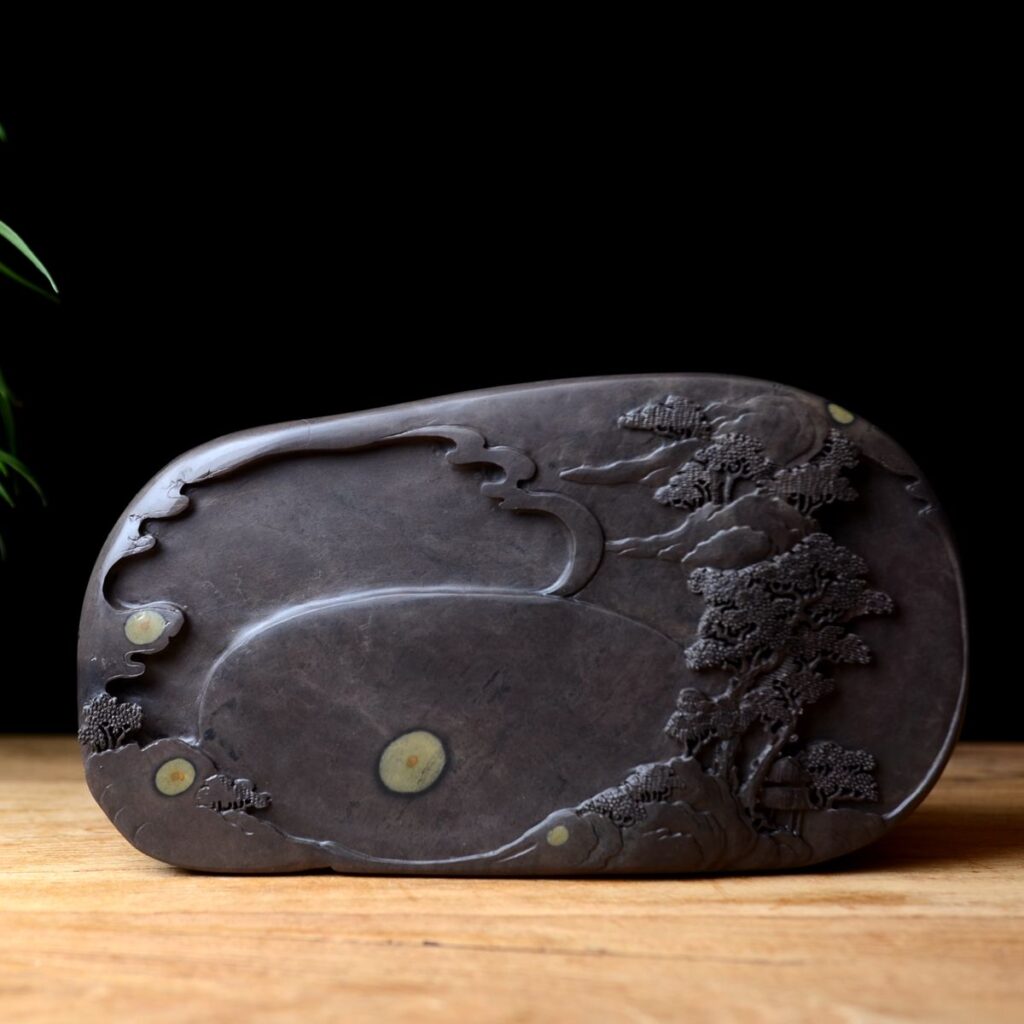
Compared with the paper, the ink stone requires much more attention. Read the making of the ink stone here. The ink stones are made from special stones, so it is common to take extra precaution maintaining them.
- Do not use liquid ink on ink stones, use it only for grinding the ink;
- Keep the ink stone clean, but wash only with clean water. There is an old saying: one would rather not wash face everyday but risk not cleaning the ink stone daily. The truth is not that scary, cleaning it every 2-3 uses will be alright!
- Use soft cleaning cloth or sponge to wash and dry the ink stone, make sure there is no lint from such cleaning materials;
- Avoid direct sunshine;
- Cover the ink stones with a lid when not using;
- Best to have separate ink stones for the pine and oil based ink sticks;
- Use high quality ink sticks, bad ones could scratch the ink stone;
- The ink stone loves to be touched, the more it has been in contact with people, the brighter it shines.
Attention: New ink stones come waxed, so before the first use please remove the wax layer. There are several ways to remove the wax, but a classic way is to use very fine sandpaper (#1000) all over the ink stone. When an ink stone is not going to be used for a while, it should be stored fully waxed. Some people keep the ink stone in water, perhaps with a few fish, to maintain its silky smooth fine texture, and to add a small scenery at home.
Our climate could play a key role in the performance of our art supplies too, so please do refine the suggestions from our blogs according to your very special conditions. Old papers, ink sticks, and ancient ink stones are collector’s items, so your well maintained art supplies could absolutely rise in value! All the more reasons to treat them well!
Enjoy such cultural discussions? Have comments? I look forward to hearing from you!
Buy Artworks | Learn Brush Painting | Learn Chinese Calligraphy
